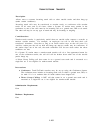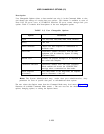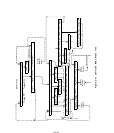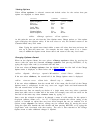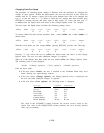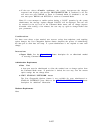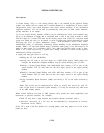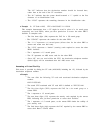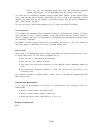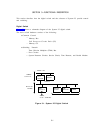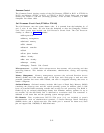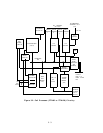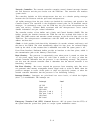The “#5” indicates that the destination number should be inserted here,
rather than at the end of the VF translation.
—
The “#*” indicates that the system should transmit a “*” symbol as the first
character of an identification code.
—
The “12345” represents the remaining characters in the identification code.
● Example 3:
VF Code = #195,
VFN = 104 5554567 ****1234*9
This example demonstrates how a VF might be used in place of a tie trunk group
connecting two local PBXs, when you have permission to access the other PBX’s
facilities to complete calls.
—
The first three digits (104) represent the FAC for a CO trunk group.
– The “5554567” represents the number for the other PBX.
The
—
“****”
represents a 6 second pause (allows time for the other PBX to
answer and return new dial tone).
—
The “1234” represents a “barrier” (security) code required to access the other
PBX’s facilities.
—
The * represents a 1.5 second pause.
—
The “9” represents an ARS access code for the other PBX.
—
Since “#5” was not used within the VFN, the destination telephone number
(dialed digits) will be transmitted after this ARS access code.
Accessing a Virtual Facility
Dial access is provided by dialing the VF code (#190-#199, including the “#”), followed by the
destination telephone number.
● Example:
—
The user dials the following VF code and associated destination telephone
number.
#192 12125551643.
—
The stored VFN associated with VF code #192 is defined as 2222*333*444.
—
The first four digits (2222) represent the FAC for a tie trunk group to a
remote PBX.
—
The * represents a 1.5 second pause.
—
The next three digits (333) represent the security code required by the remote
PBX, indicating that you have permission to access their facilities.
—
The * represents a 1.5 second pause, as the remote PBX checks the validity of
your security code.
—
The final three digits (444) represent the FAC required by the remote PBX to
access their Band 5 WATS trunks.
2-260



